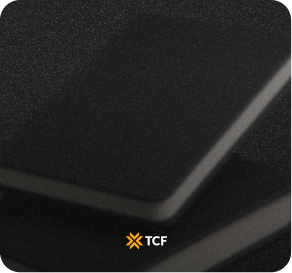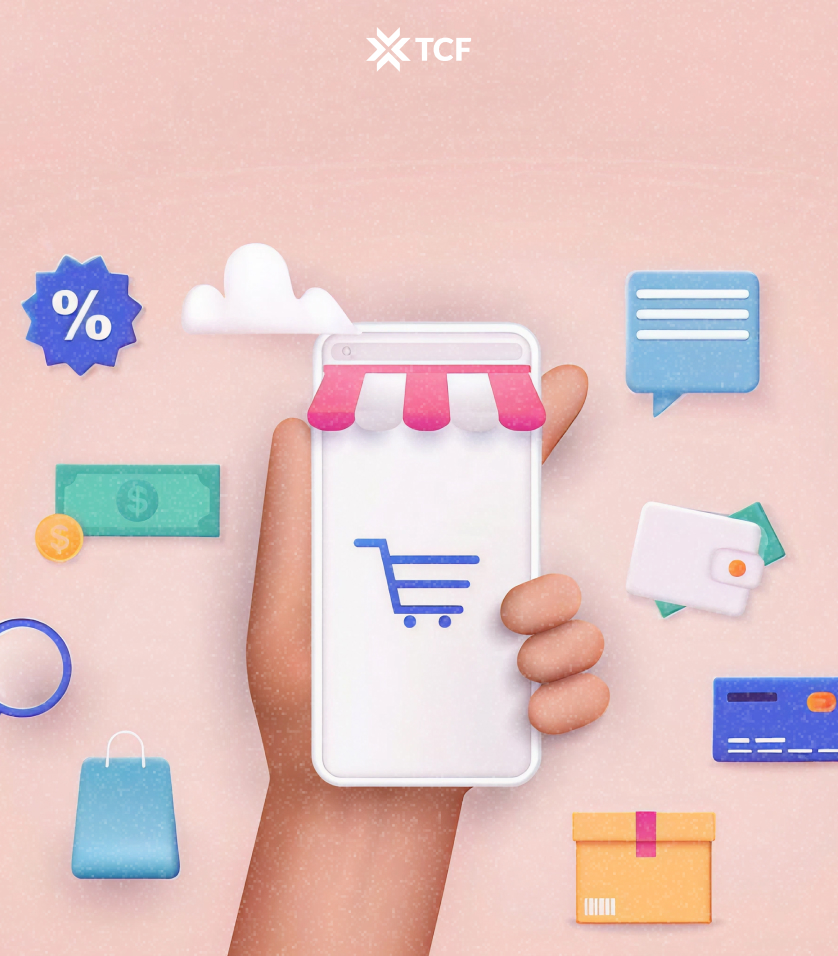Ah, Black Friday, the one day (or let’s be real, week) of the year when shoppers go wild, your website feels like it’s under siege, and you’ve got more orders in a few hours than you’ve had all month. It’s a thrill, a rush, and sometimes a bit of a nightmare.
In 2024 alone, U.S. shoppers spent $10.8 billion online on Black Friday alone and $41.1 billion across the Cyber 5 period, while total holiday ecommerce sales hit $241.4 billion.
Tempting, right? One thing for sure, with the right game plan, you can thrive during Black Friday and Cyber Monday (BFCM) 2025 too.
Whether you’re a seasoned pro or it’s your first time diving into the Black Friday madness, one thing’s for sure: preparation is everything. From optimizing your website to offering irresistible deals, this Black Friday checklist has you covered with 26 must-haves that will help you turn Black Friday into a major win for your ecommerce store.
So, grab your virtual notepad and let’s get your store Black Friday-ready!
[[cta5]]
The Top 22 Essential Steps for Your Black Friday and Cyber Monday Campaign
1. Set Clear BFCM Goals and KPIs
Before diving into the Black Friday frenzy, you need to define what success looks like. Is it doubling your revenue? Boosting your average order value? Maybe it's acquiring new customers or increasing email sign-ups. Whatever your focus, setting clear goals and key performance indicators (KPIs) will guide your strategy and help you stay on track during the chaos.
Start by asking yourself:
- What’s the revenue target for BFCM?
- How much of a sales increase are you aiming for?
- How many new customers do you want to acquire?
2. Plan Black Friday Promotions Early
One of the keys to a successful Black Friday campaign is having your promotions mapped out well in advance. Last-minute scrambling leads to missed opportunities and less-than-ideal deals. Decide on the types of discounts and offers that will not only attract shoppers but also drive conversions.
Consider these options:
- Limited-time offers that create urgency and FOMO (Fear of Missing Out).
- Bundle deals to encourage customers to buy more and increase average order value.
- Tiered discounts that reward bigger spenders (e.g., spend $100, get 10% off; spend $200, get 20% off).
3. Optimize Website Performance (Speed + Mobile)
Your promos won’t matter if shoppers can’t load your site or navigate it smoothly. Black Friday traffic spikes are brutal, and with more than half of transactions now happening on smartphones, you need a site that’s both fast and flawless on mobile.
Here’s what to focus on:
- Stress-test capacity: Run load tests to confirm your site can handle surges without crashing.
- Speed up everything: Compress images, clean up code, and use a Content Delivery Network (CDN) for faster global load times.
- Mobile-first experience: Test across devices and screen sizes. Make sure navigation, product pages, and checkout flow are seamless on phones.
- Smooth checkout on mobile: Prioritize one-tap payments, autofill fields, and big, easy-to-tap buttons.
A fast, mobile-optimized site keeps shoppers from bailing and ensures your BFCM campaigns actually convert.
4. Strengthen Security and Compliance
Black Friday could be a hotspot for cyberattacks and legal risks. With massive traffic and payment data flowing in, your store has to be locked down and compliant with evolving regulations.
Here’s how to cover both:
- Update SSL certificates: Shoppers trust the padlock icon. Make sure yours is valid.
- Secure payments: Keep gateways PCI DSS–compliant and enable fraud detection to catch suspicious activity.
- Data privacy laws: Review GDPR, CCPA, and any new regional requirements, then update your privacy policy and cookie banners.
- Customer consent: Use clear, compliant consent pop-ups for data collection.
- Protect customer data: Store and transfer personal information with up-to-date encryption.
Strong security builds shopper trust, while compliance shields your brand from fines or PR disasters.
5. Streamline the Checkout Process
The last thing you want is for a shopper, who’s excited to buy, to abandon their cart because of a clunky or complicated checkout process. To maximize conversions, your checkout needs to be as quick and seamless as possible.
Here’s how to streamline it:
- Offer guest checkout so customers don’t have to create an account to make a purchase.
- Minimize the number of steps required to complete a transaction: too many fields or unnecessary steps can lead to drop-offs.
- Auto-fill options for shipping and payment information can save time and reduce friction.
- Show a progress bar during checkout so customers know exactly how close they are to completing their purchase.
By simplifying the checkout process, you’ll reduce cart abandonment and ensure more shoppers make it all the way through to the “thank you” page.
6. Set Up BFCM Backups and Contingency Plans
Even with the best prep, things can still break on Black Friday: servers crash, payment gateways fail, or pages go down under heavy traffic. A solid contingency plan keeps you from losing sales when the unexpected happens.
How to prepare:
- Back up your site: Ensure recent backups of your store and databases are stored securely.
- Set monitoring alerts: Use uptime and error monitoring tools so you’re notified immediately if something fails.
- Prepare fallback options: Have an alternate payment gateway and backup CDN configured if your primary systems stall.
- Draft comms in advance: Create pre-approved email and social templates to update customers quickly if issues occur.
- Assign a rapid-response team: Make sure roles and escalation contacts are clear before BFCM starts.
When you’ve got backups and a plan B in place, small hiccups won’t turn into lost revenue or frustrated customers.
7. Stock Inventory Strategically
Running out of stock during Black Friday kills momentum, but overstocking ties up cash you’ll need later. Smart forecasting is key and so is planning around the realities of today’s supply chains.
How to stay ready:
- Forecast with data: Look at last year’s BFCM sales, seasonal trends, and pre-sale buzz to predict demand.
- Plan for lead times: Shipping delays and supplier bottlenecks are common. Lock in orders earlier than usual.
- Coordinate with partners: Confirm production schedules and delivery windows to avoid last-minute shortages.
- Use smart alerts: Set up low-stock triggers for top sellers so you can reorder quickly.
- Communicate availability: If restocks are inbound, let customers know to reduce frustration and lost sales.
By blending demand forecasting with proactive supply planning, you avoid the “out of stock” banner that sends shoppers to competitors.
8. Create Engaging Landing Pages
Your Black Friday promotions deserve more than just a banner on your homepage. Dedicated landing pages for your BFCM deals can help you focus your messaging, make it easier for customers to navigate, and ultimately drive more conversions.
Here’s how to make them engaging:
- Design visually compelling pages that showcase your top deals with eye-catching graphics and simple layouts.
- Use clear, bold calls-to-action (CTAs) like “Shop Now” or “Limited Time Offer” to guide shoppers toward making a purchase.
- Highlight urgency by featuring countdown timers or “limited stock” notices.
- Ensure consistency between your marketing emails, social ads, and landing pages to create a seamless experience for visitors.
9. Implement SEO Best Practices
Organic traffic spikes during BFCM when shoppers Google phrases like “Black Friday deals on skincare” or “best Black Friday tech discounts.” If your store isn’t optimized for those seasonal keywords, you’ll miss out on high-intent buyers.
What to do now:
- Target Black Friday keywords: Add “Black Friday” and “Cyber Monday” variations to product titles, meta tags, and landing pages. Example: “Black Friday Deals on Wireless Earbuds.”
- Optimize visuals: Compress images, add alt text with keywords, and ensure product photos load fast on mobile.
- Use clean URLs: Short, descriptive, and keyword-friendly slugs like /black-friday-headphones-deals.
- Update meta titles/descriptions: Highlight discounts and urgency so your search snippets stand out.
- Add schema markup: Use FAQ and product schema to increase chances of rich snippets in Google.
- Publish early: Get Black Friday landing pages live weeks before BFCM so they start ranking in time.
Solid SEO now means customers searching for Black Friday deals find your store first, not your competitors.
10. Build Email Campaigns with Early Access Perks
Email is still the MVP of Black Friday and Cyber Monday marketing. It drives anticipation, delivers your best offers straight to inboxes, and converts at a higher rate than most channels. Pairing it with early-access perks turns your campaigns into a loyalty play and a revenue accelerator.
How to use both together:
- Tease early: Send countdown emails that preview what’s coming.
- Segment lists: Prioritize VIPs, repeat buyers, or high-engagement subscribers.
- Exclusive window: Give them a head start (a few hours or even a full day) via a private link or password-protected page.
- Stack incentives: Add perks like free shipping, extra loyalty points, or limited-edition bundles.
- Highlight urgency: Remind subscribers that popular items can sell out before the general sale.
- Clear CTAs: Drive straight to the early-access page for quick action.
Early access rewards your best customers, builds loyalty, and locks in sales before the rest of the crowd even shows up.
11. Supercharge Social Media with Ads + Influencers
Social media is where Black Friday buzz explodes, and the combo of paid ads plus influencer shoutouts puts your brand right in the middle of it. Ads give you scale, influencers give you trust, and together they drive clicks that actually convert.
How to make it work:
- Run targeted ads: Use Facebook, Instagram, and TikTok to reach shoppers by interest, behavior, and demographics.
- Retarget browsers: Bring back visitors who viewed products or abandoned carts with tailored offers.
- Partner with influencers: Collaborate with creators who fit your niche. Bonus points if they post live unboxings or “shop with me” content during BFCM.
- Exclusive codes: Give influencers unique discount codes to track sales and build urgency.
- Mix organic + paid: Boost influencer posts as ads for wider reach.
- Stay agile: Monitor performance daily and shift budget toward top performers.
When shoppers see deals from both your brand and voices they already trust, they’re far more likely to hit checkout.
More Black Friday Resources
• Top Black Friday Campaigns That Drove Massive Sales
• 28 Last-Minute Black Friday Marketing Ideas to Boost eCommerce Sales
• 19 Proven Black Friday Social Media Post Ideas for Your Ecommerce Store
12. Set Up Abandoned Cart Recovery
Abandoned carts happen, but they don’t have to stay abandoned. A strong recovery flow pulls shoppers back in with timely, personalized reminders.
How to do it right:
- Automated emails: Send the first reminder within an hour, with a picture of the item left behind and a direct checkout link.
- SMS follow-ups: A quick text with a discount code or free shipping offer can be the nudge that seals the deal.
- Exit-intent popups: When shoppers start to leave, show a last-minute incentive like 10% off or bonus points for completing the order now.
- Layer urgency: Use countdown timers or low-stock notices to push faster decisions.
- Test timing: Experiment with 1-hour, 24-hour, and 48-hour cadences to find what converts best for your audience.
By reaching customers across email, text, and on-site prompts, you dramatically increase the chances that an abandoned cart turns into a completed order.
13. Enhance Site Search Functionality
During the Black Friday rush, customers want to find products fast. An accurate and efficient site search functionality can make all the difference in guiding shoppers to the items they’re looking for, ultimately increasing sales.
Here’s how to enhance it:
- Optimize your site’s search bar to handle common queries, including product names, categories, and related keywords.
- Implement autocomplete suggestions to help users find products even faster.
- Ensure search filters (e.g., by price, category, or availability) are intuitive and easy to use.
- Track search behavior to identify popular products or search terms and ensure those items are well-stocked and prominently featured.
14. Implement Live Chat and AI Support
Black Friday shoppers move fast, and they expect answers instantly. In fact, over 70% of customers now expect real-time support during peak shopping periods. Live chat and AI-driven tools keep your store responsive even when traffic surges.
Best practices:
- Live chat coverage: Have support ready for checkout questions, shipping concerns, or promo code issues.
- AI chatbots: Use bots to handle FAQs (returns, shipping times, payment options) so your team can focus on complex queries.
- Proactive prompts: Trigger a chat window if a shopper lingers on checkout or cart pages.
- Scale smartly: During BFCM, bots can handle thousands of chats at once, reducing wait times.
- Track insights: Review chat logs to spot recurring friction points and fix them quickly.
Shoppers who get quick answers are far less likely to bounce and far more likely to buy.
15. Review Return and Refund Policies
Clear return and refund policies build trust, especially when customers are making bigger purchases during Black Friday. If buyers know they can change their minds, they’re more likely to hit the checkout.
How to make policies customer-friendly:
- Extended return window: Many retailers now extend returns through mid-January to cover holiday gifts. Match this standard so shoppers feel secure.
- Keep it simple: Write policies in plain language with no hidden catches.
- Make it visible: Place policy links on product pages, at checkout, and in confirmation emails.
- Highlight perks: If you offer free returns or store credit, showcase it as part of the shopping experience.
Generous, transparent policies turn hesitation into confidence and can convert one-time holiday buyers into repeat customers.
16. Test All Site Elements
Before the Black Friday rush, it’s crucial to ensure that every aspect of your website functions perfectly. From forms to links to your shopping cart, everything needs to work seamlessly to provide a smooth user experience and avoid frustrating your customers.
Here’s how to prepare:
- Test all forms, including contact, subscription, and checkout forms, to ensure they submit properly.
- Check every link across your site, especially in high-traffic areas like product pages and CTAs, to avoid broken links.
- Verify shopping cart functionality, ensuring items are added and removed correctly, and the checkout process is smooth.
- Conduct mobile testing to confirm the site works just as well on mobile devices.
17. Set Up Analytics and Tracking
Tracking your website’s performance during Black Friday is essential for making real-time adjustments and ensuring your strategy is on point. By using analytics tools, you can monitor traffic, sales, and user behavior to identify what’s working and what needs tweaking.
Here’s how to set it up:
- Use Google Analytics to track traffic sources, conversion rates, and sales performance.
- Set up event tracking to monitor key actions like clicks on CTAs, product views, and completed purchases.
- Create custom dashboards to keep an eye on important metrics throughout the day.
- Use heatmaps and user behavior tools to see where visitors are clicking and identify potential friction points.
18. Offer Multiple Payment Options
Different customers have different payment preferences, and offering multiple payment methods can help you capture more sales during Black Friday. The more options you provide, the easier it is for shoppers to complete their purchases quickly and comfortably.
Here’s how to cater to their needs:
- Offer traditional payment options like credit and debit cards to cover the basics.
- Integrate digital wallets such as PayPal, Apple Pay, and Google Pay for customers who prefer faster, more secure transactions.
- Consider buy-now-pay-later options like Afterpay or Klarna to attract shoppers who want more flexibility.
- Ensure all payment methods are secure and function smoothly during checkout.
19. Plan for Shipping and Fulfillment
Fast, reliable delivery is as important as the discount. During BFCM, customers want options that fit their budget and timeline and they’ll bounce if you can’t meet expectations.
What to prioritize:
- Lock in capacity early: Confirm with carriers and fulfillment partners that they can handle your projected order volume.
- Offer free shipping thresholds: Shoppers expect it. Use a minimum spend (e.g., “Free shipping over $50”) to boost average order value.
- Promote expedited options: Give last-minute buyers peace of mind with guaranteed delivery dates.
- Integrate BNPL at checkout: Pairing flexible payment options (like Klarna or Afterpay) with clear shipping guarantees can close hesitant buyers.
- Communicate clearly: Display estimated delivery windows on product and checkout pages.
When customers see flexible shipping and payment options upfront, they’re more likely to buy and less likely to second-guess.
20. Monitor Competitor Strategies
Black Friday is a battlefield, and your competitors are fighting for the same shoppers. Watching their moves in real time lets you adjust your offers before it’s too late.
How to stay ahead:
- Track pricing and promos: Use tools like PriceSpider, Prisync, or CamelCamelCamel to keep tabs on competitor discounts.
- Monitor traffic sources: Platforms like Similarweb or SEMrush can reveal where their clicks are coming from.
- Set alerts: Google Alerts or Mention will flag when competitors announce new sales.
- Identify gaps: If rivals focus on sitewide discounts, highlight bundles, exclusive perks, or faster shipping to stand out.
- Stay agile: Be ready to pivot promos or ad spend mid-campaign.
Competitor intel keeps you from flying blind and ensures your offers stay sharp enough to win clicks and conversions.
21. Review and Adjust Pricing Strategies
Black Friday shoppers compare prices nonstop, and your margins can vanish if you’re not strategic. The right pricing approach keeps you competitive without racing to the bottom.
Smart pricing moves:
- Benchmark competitors: Track their discounts daily to stay in range.
- Use AI-driven repricing tools: Platforms like Prisync or BlackCurve adjust prices in real time based on demand, competitor moves, and inventory levels.
- Tiered discounts: Incentivize bigger carts (spend $100, get 15% off; spend $200, get 25% off).
- Protect margins: Set minimum thresholds so discounts don’t eat into profits.
- Test bundles: Pair high-demand items with slower movers to maximize value.
Dynamic pricing keeps your offers sharp, your margins safe, and your store competitive when shoppers are hunting for the best deal.
22. Prepare Post-Sale Engagement
Black Friday and Cyber Monday don't end when the sale is over. Your real opportunity lies in retaining the new customers you’ve gained. By planning post-sale engagement strategies, you can turn one-time shoppers into loyal, repeat customers.
How to extend the relationship:
- Thank-you emails: Send personalized messages that feel human, not templated.
- Loyalty programs: Invite new customers to join and reward them with points, perks, or early access to future drops.
- Referral incentives: Encourage them to bring friends with a “give $10, get $10” offer.
- Remarketing ads: Re-engage browsers and buyers with tailored recommendations.
- Ask for reviews: Social proof builds credibility for future shoppers.
- Community touchpoints: Point them toward your brand’s social groups, challenges, or newsletters to stay connected.
Conclusion
Black Friday and Cyber Monday test everything: your site, your inventory, your support team, and your ability to keep customers moving smoothly from first click to checkout.
With this checklist, you’ve covered all the essential steps for prepping: clear goals, a fast and secure site, inventory locked in, landing pages ready, campaigns scheduled, and support systems primed. That prep creates a shopping experience customers remember for the right reasons, subsequently paying off in sales too.
The real win comes after the rush. Every order is a chance to turn a deal hunter into a repeat buyer, every smooth delivery builds trust, and every post-sale touchpoint deepens the relationship. Treat Black Friday as the kickoff to long-term growth, not just a single weekend of chaos.
Preparation now is what makes BFCM profitable, manageable, and repeatable. The sooner you lock it in, the easier it is to execute with confidence when traffic spikes and carts start filling up.
Happy birthday, shopaholics!
[[cta10]]
FAQs
How early should I start preparing for Black Friday?
Three months ahead is the sweet spot. That gives you enough time to map out your epic promotions, get your website running like a dream, coordinate with suppliers, and have your marketing campaigns locked and loaded. Basically, it’s the prep window that’ll keep you from scrambling at the last minute. But don’t worry, we’ve got you covered for some last-minute promotion ideas as well.
What marketing channels should I focus on for Black Friday?
Go where your audience is hanging out! Email marketing, social media ads, influencer shoutouts: these are your Black Friday BFFs. And don’t forget search engine marketing for those last-minute deal hunters.
What types of discounts work best for Black Friday?
Percentage discounts like 20% off? Always a win. BOGO offers? Yes, please! Add in some limited-time deals for that FOMO effect. Bundling products and giving your VIPs exclusive access can also really boost those sales.






.png)


.png)


.jpg)

.jpg)